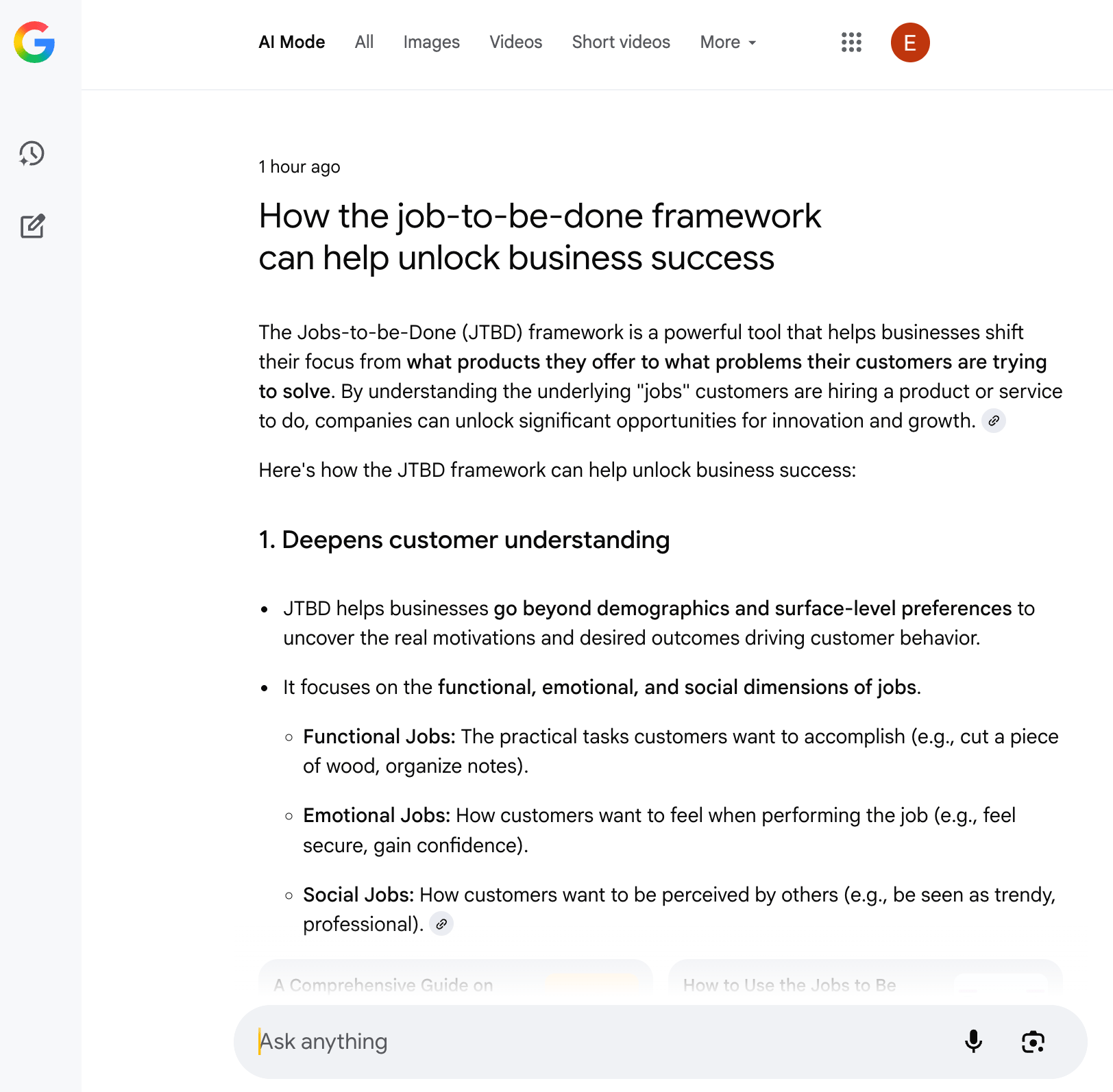Hi {{ first name | there }},
Google has launched AI Mode in the UK.
Last month, Google quietly rewired how the future of search works. AI Mode means your customer can ask one question and Google will do the rest: breaking it into dozens of invisible sub-queries, then serving an answer organised by themes.
It’s like having a research assistant baked into Search.
I’m not going to unpack all the architecture here. I’ve put that in a full research memo with FAQs, examples, and optimisation tips here.
Instead, I’d like to share something that’s grabbed my interest more than anything: how AI Mode fundamentally works.
My prediction - like most - is that AI Mode will (very) soon become the default version of Google.
And in this new architecture, Google has taken a series of steps that effectively push the entire search industry forward in one giant leap.
1. Sub-Queries Are the New Keywords
In AI Mode, the question your customer types is just the starting point. Google’s Query Fan-Out turns it into a list of “topics” it thinks worth exploring:
If they ask “Best CRM for small teams”, it might also search “ease of use for CRM”, “pricing for startups”, “CRM with integrations”, and more.
Back in the early days of SEO, we spent hours mapping out long-tail keywords, related topics, and semantic clusters; all so we could show up for the different angles a customer might search.
AI Mode is essentially doing that work for the user in real time.
It’s taking their single question, running all the related searches (and looking up websites) on their behalf, and then assembling the answer.
The shift isn’t that the topics are new, it’s that Google is now doing the work of discovering those related queries for you.
Your job is to make sure your content is ready to be chosen when it does.
Deep Research on AI Mode
If you want the full technical breakdown — including how AI Mode works, where ads fit, and how to track visibility — you can read my complete AI Mode memo I created for our team here.
Below is an example of AI Mode in action:

2. Layers of Search Intent in One Search
AI Mode uses something Google calls ‘Thematic Search’ to group its findings into themes: pros, cons, features, comparisons, use cases.
Each theme is a layer of your customer’s intent. They might not ask “compare integrations vs pricing vs support”, but the AI assumes they want it all.
If you only address the top layer (“best CRM”), you miss the underlayers where decisions are actually made.
Cover each layer, and you increase your odds of being cited; even for queries you’d never traditionally rank for…
Why this matters.
Your content is no longer competing to be "top 10" or the first click.
It’s competing to be the most useful puzzle piece in an AI-assembled answer.
So no - the work you’ve done isn’t wasted.
But it might need to be reconfigured so it’s easier for AI Mode to surface; which really means making it more useful for your customer so they can make progress faster.
Action step for this week:
Pick one core search term your customers use to discover you.
List out all the sub-topics a buyer might have when researching it.
Map those to thematic layers (e.g. options, features, cost, ease of use).
Audit your content. How many of those layers do you already answer?
This isn’t the death of SEO – it’s the death of surface-level traffic.
Those of us who adapt will end up with fewer, but far better interactions.
And in my opinion, that’s a great thing for the internet.
Speak soon,
Peter
P.S. Did someone forward you this email? Was it helpful? Sign-up here.
